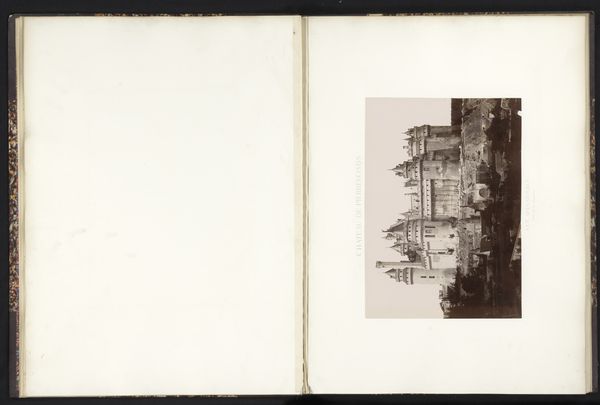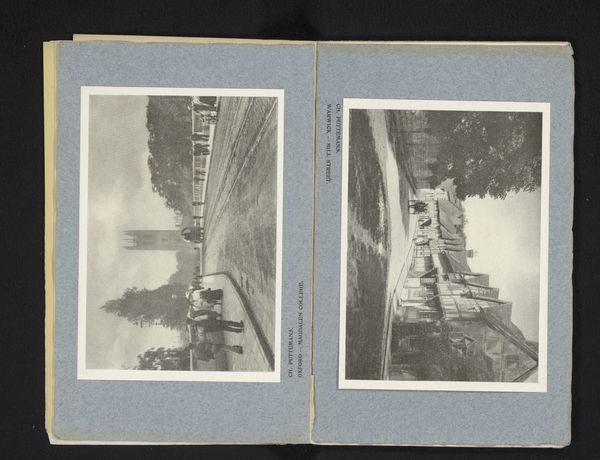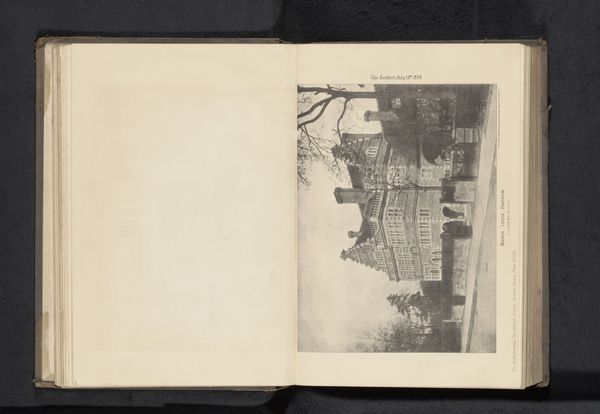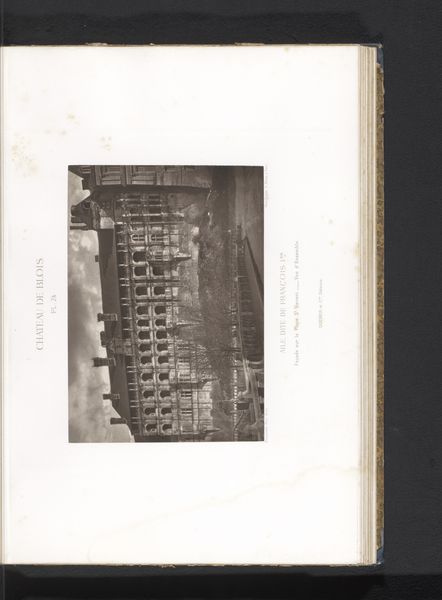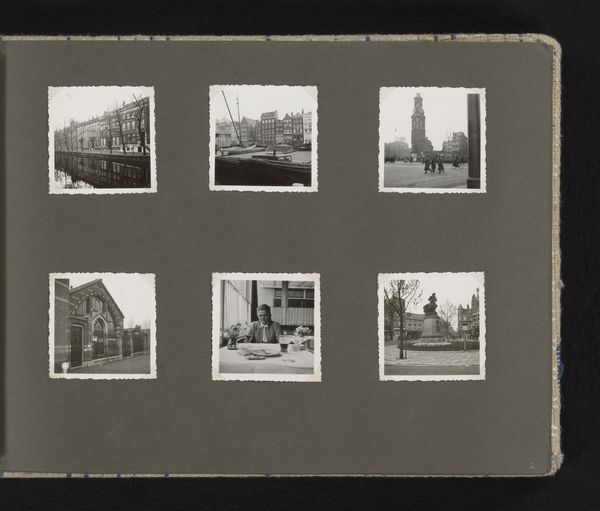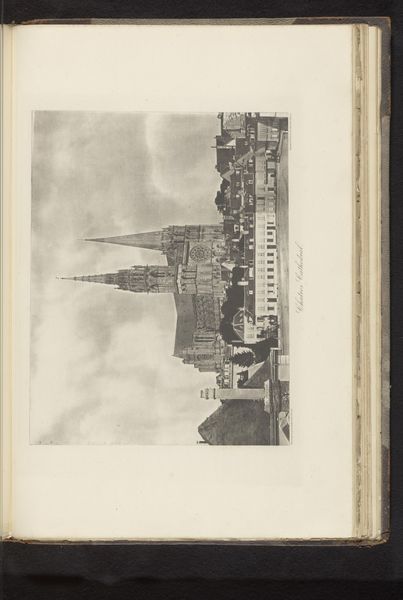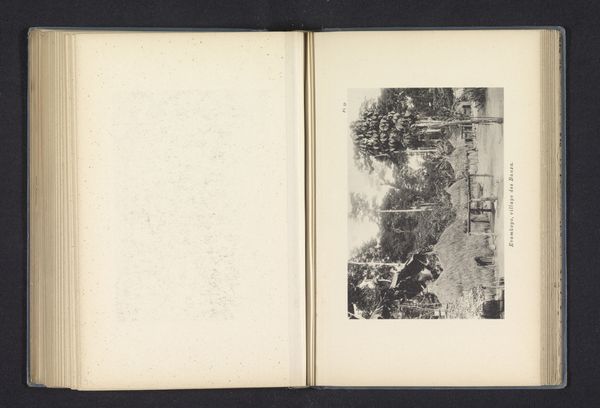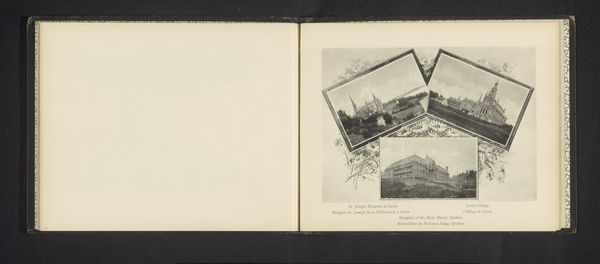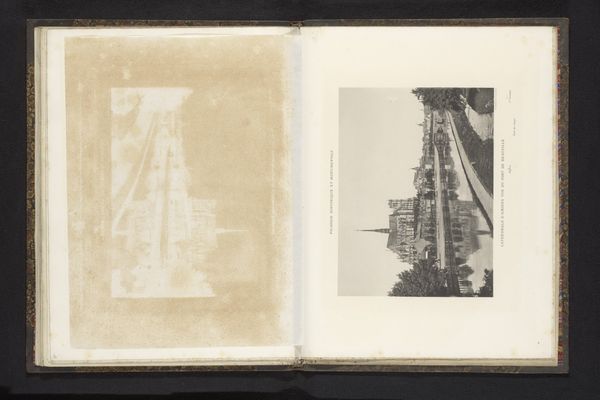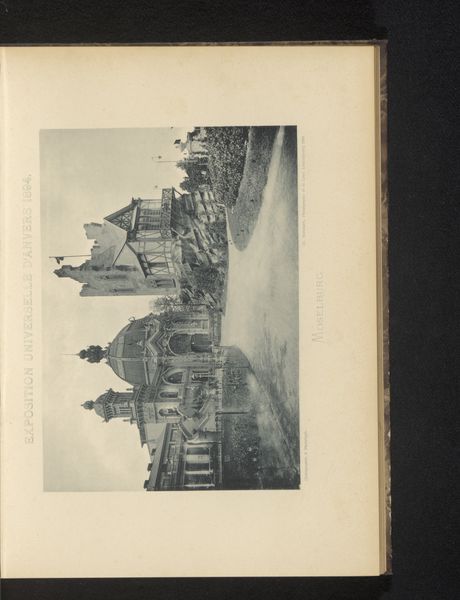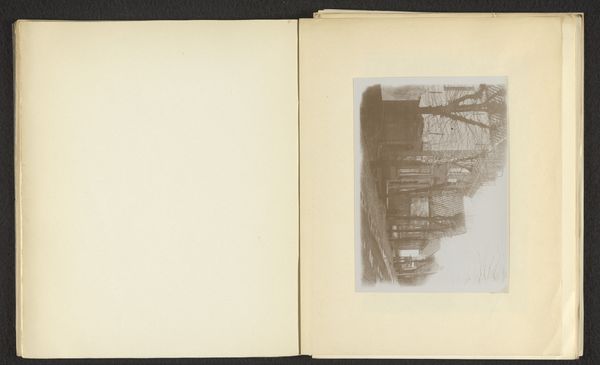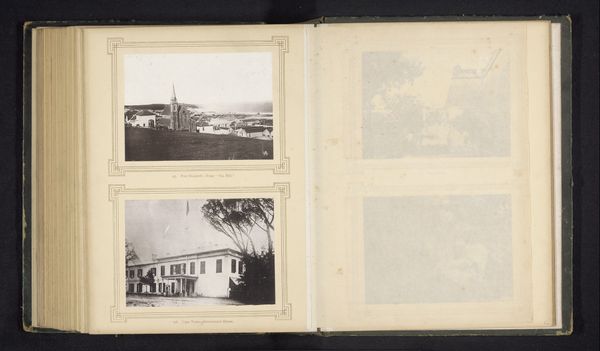
Dimensions: height 90 mm, width 140 mm, height 223 mm, width 245 mm
Copyright: Rijks Museum: Open Domain
Editor: Here we have a gelatin silver print titled "Amiens en Bosc-le-Hard," potentially created between 1940 and 1946 by an anonymous artist. It shows two views of what I presume are streets from Amiens and Bosc-le-Hard. The monochromatic palette lends the photos a melancholic atmosphere; everything looks static. How would you interpret this pairing of cityscapes, Curator? Curator: This photograph has a particular resonance for me. Looking at these post-impressionistic cityscapes captured during that period—potentially amidst or shortly after World War II—it is hard to separate them from that context. It feels like gazing into a recent past, but one changed forever. Do you see how the very grain of the image contributes to that sense of looking at a vanished world? It’s like the past is both present and incredibly far away at the same time. Editor: Yes, it does, now that you mention it! Almost as though you could touch it. What does it suggest, that the photos were mounted together on the same album page? Curator: That's a fabulous question. Mounting the photos on the same album page encourages us to reflect upon the contrasting atmospheres: One scene captures urban thoroughfares, while the other features the famous cathedral under what seems to be repair. Are they in the same place? This layout really invites us to dream and travel between one town and another. It hints at interconnectedness while subtly acknowledging isolation. Perhaps the artist wanted to immortalize in their mind these spaces, framing a memory as a refuge from something happening at the time, do you feel this sensation, too? Editor: I think I get that sense of preservation, almost like they wanted to grasp onto a quickly disappearing world. I now notice that they seem suspended in a state of temporal ambiguity! Curator: Beautifully put! So what do you take away from this evocative photograph now? Editor: I think it makes us examine the dialogue between absence and memory through architecture. Curator: Exactly, and perhaps recognize the persistent presence of time in otherwise still, sepia-toned spaces.
Comments
No comments
Be the first to comment and join the conversation on the ultimate creative platform.
